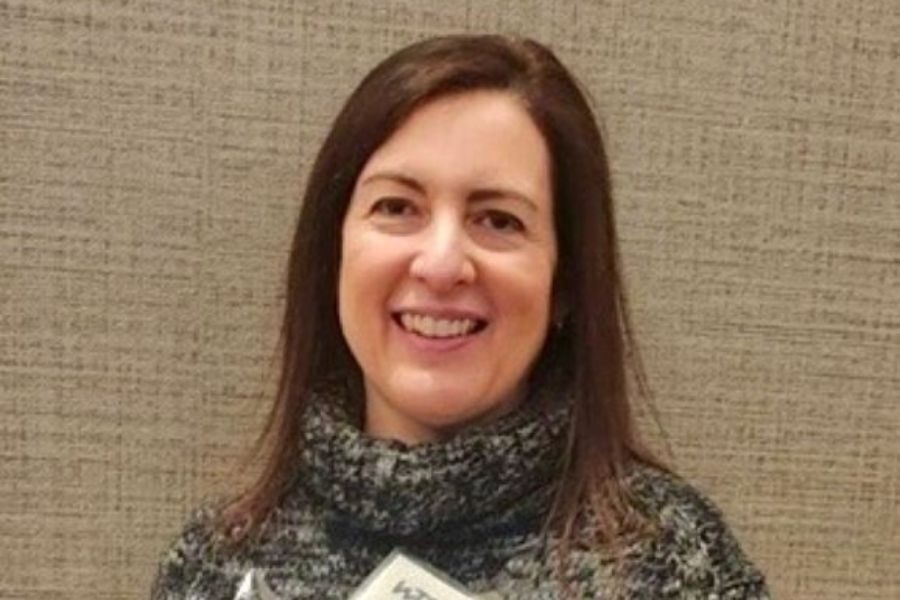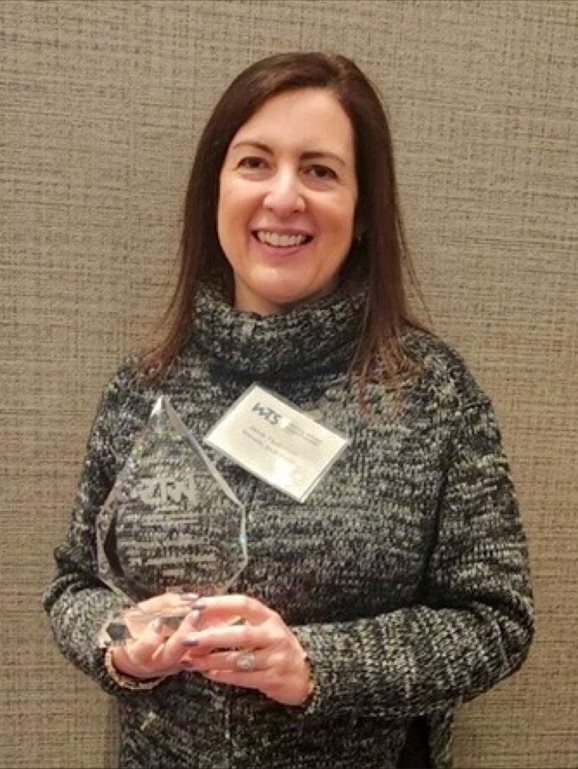A Look at Women’s Leadership in the AEC Industry with Janie Tiedeman

Throughout history, women have made remarkable strides in the architecture, engineering, and construction fields. From Lillian Gilbreth, the first woman elected to the National Academy of Engineering in 1965, to Janet Guthrie, a pioneering figure both as a racecar driver and an aerospace engineer, women have significantly contributed to the advancement of our world and continue to do so today.
Women’s History Month is dedicated to celebrating the contributions women have made to the United States and recognizing the specific achievements women have made over the course of American history in a variety of fields. The origins of Women’s History Month began in 1981, but the holiday wasn’t celebrated nationally until 1987 when Congress passed additional resolutions requesting and authorizing the President to proclaim March annually as Women’s History Month.
The 2024 National Women’s History Month’s theme celebrates “Women Who Advocate for Equity, Diversity, and Inclusion,” which recognizes women who understand the need to eliminate bias and discrimination from individuals’ lives and institutions. To commemorate a month of celebration, RS&H sat down with Senior Vice President and East Regional Leader for Infrastructure Janie Tiedeman, PE. Tiedeman is not only the chair for RS&H’s inaugural DE&I Steering Committee, but also serves as chair for RS&H’s women’s professional network, Ignite.

Janie participated on a panel speaking on ”Unity Unveiled: Empowering Tomorrow Together,” hosted by the Maryland Transportation Builders & Materials Association and Construction Management Association of America, Baltimore Chapter.
How did you become interested in the A/E/C industry, and what motivated you to pursue a leadership role within it?
I started out in a pre-med program in college with a major in math. I realized after my sophomore year that medicine was not for me, and becoming an actuary was pretty much my only option with a degree in math. I even called an insurance company to look into an actuarial summer internship, and they told me I would probably hate it, so I should consider a different field! Since I had already taken so many math and science classes, I set up a meeting with the College of Engineering at the University of Maryland to find out what it would take to become an engineering major. At the time, I didn’t know any engineers or any engineering majors, so it was a total leap of faith, especially starting a new major as a junior. My husband, who I was dating at the time, was fascinated by building construction and thought structural engineering might be “fun,” so that’s what I decided to major in.
That began my engineering journey. I ended up loving structures so much that I stayed at UMD for a master’s degree in structures before starting my career as a structural engineer for a global architecture firm. Sadly, the building construction industry tanked in the 1990s, so I moved to transportation and became a bridge engineer. I’ve had a pretty circuitous and unique– but very rewarding – engineering journey since then. I wouldn’t say that I necessarily set out to take on leadership roles, but I was given many opportunities for promotions and stretch assignments along the way that gave me the skills and confidence to raise my hand for key leadership roles. I’ve also worked for some incredible leaders who always pushed me to do more, even when I wasn’t sure I was ready.
Can you share any memorable projects or milestones throughout your career that have influenced your leadership style within the A/E/C industry?
As mentioned before, I’ve had a unique career, which took me from structural engineering through some other interesting stops and eventually brought me to transportation planning (what I’ve learned is called PD&E in Florida). I’m very proud of two projects, one from each stop on my journey, that helped shape who I am today.
The first was a very early design-build project in Hong Kong, where my company at the time was leading the bridge design. It was the first large bridge project I worked on, and it gave me the opportunity to design a complex structure using the metric system while also giving me the opportunity to work on a project outside the U.S. with colleagues in multiple offices. The other project is a National Environmental Policy Act (NEPA) study for a toll road in Maryland that I helped lead after transitioning to transportation. Because this project was very controversial and politically driven, it gave me access to high-level public and private sector leaders who expanded my network in unbelievable ways and further honed my technical and management skills.

As incoming chair, Janie joined other associates to plan the upcoming Ignite program year (RS&H’s women’s professional network).
What inspired you to become the chair for Ignite, and what do you hope to achieve through leading the RS&H women’s professional network?
At my previous firm, I had the honor of working for about 18 months as the global lead for diversity, equity, and inclusion (DE&I), and I developed strategies that led to the implementation of several different policies and programs. One of the programs I helped initiate was a series of employee resource groups (ERG), which we started from scratch. When I came to RS&H, I wanted to support the existing ERGs and share my DE&I experience in any way that was helpful. I was first asked if I would consider being the Ignite vice chair, which I was thrilled to do, which led to becoming the chair this year. I am fortunate to have inherited a strong ERG from my predecessors, and I hope to continue the momentum of giving women at RS&H more visibility and support, and more access to opportunities to grow their careers. Ignite continues to offer amazing programs, like Connections (a mentorship program), as well as great internal and external speakers.

Janie partook in a panel discussion on recruiting and retention through a DE&I lens at the 2023 WTS International Annual Conference. Pictured here with other RS&H representatives attending the conference.
Who is the most influential woman you know, and how does she inspire you?
I’m having a really tough time with this question, because I know so many inspiring women and I can’t choose just one! I’ve been very fortunate throughout my career to form lifelong friendships with strong female leaders and peers of all kinds, and they inspire me in different ways. Some are business owners who have built their companies into powerhouses, some are amazing mentors and advice–givers who have been through the trenches with me, and others are colleagues who never cease to amaze me with their innovative ideas and ability to solve big problems for our clients.

Janie sat on a panel discussion centered around DE&I initiatives as part of the 2023 ACEC fall conference.
What do you think are some key steps to supporting the growth of women in leadership roles and the A/E/C industry at large?
This is a complex topic, because women are often expected or think they have to do it all. Sometimes we must make tough decisions when professional and personal responsibilities overlap. This means the path to leadership can be very different for each person. In my experience, the first step in supporting the growth of women is to provide an inclusive and safe environment where women, and all employees, feel like they can be themselves and ask for help without being penalized. We are in unprecedented times in terms of a shrinking workforce, so employers are looking for ways to retain their best people and bring on the best and brightest new talent.
Even just 10 years ago, women who chose to take a break or reduce their hours to take care of other parts of their lives were tagged as “less than” by some managers, and even overlooked to lead demanding projects or compete for promotions. Today, with the need for an all-hands approach to delivering projects, many women are more comfortable talking about how their employers can help them manage their hours and responsibilities, so everyone ultimately wins.

Janie was a 2023 recipient of the WTS Champions Award, recognizing her years of dedication and work in the community.
It’s also important for women to reach out to people who can serve as mentors/advocates and ask for (and expect to receive) development opportunities to strengthen their skills. One of the most impactful investments in my career has been taking on leadership roles in professional organizations like the Women’s Transportation Seminar (WTS) and the American Council of Engineering Companies (ACEC). These organizations provide incredible networking opportunities and are also a great way to develop leadership and communication skills. When companies support involvement in professional organizations, the entire industry benefits along with the individuals.



